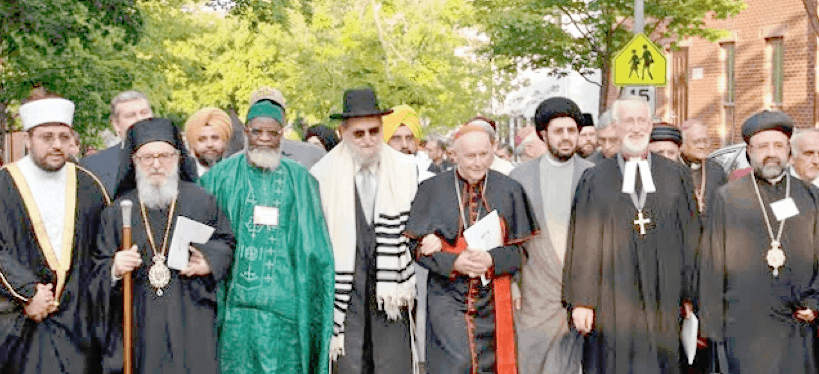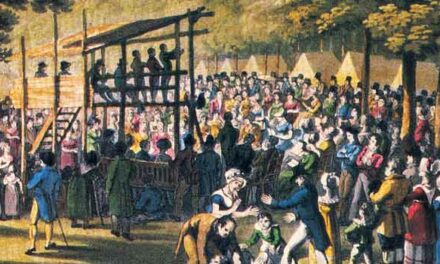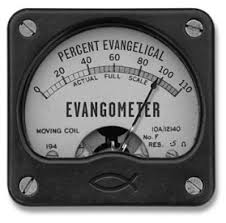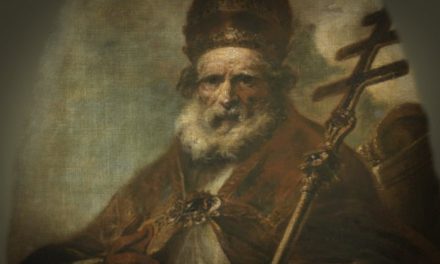In his marvelous one volume book on Church History, Bruce Shelley relates how the World Council of Churches came up with its motto.
In 1962, its General Secretary, Willem Hooft, met a delegation of Russian Orthodox leaders in a Leningrad hotel over breakfast. The Russians complained the current WCC motto left out a crucial element of their theology, without which they couldn’t join. They needed to see some reference to the Trinity, however brief.
From discussions with many Protestant groups, Hooft knew what kept them from joining; an absence in the motto of any reference to the importance of the Bible. In a flash of insight, he grabbed the breakfast menu and penned, “The World Council of Churches is a fellowship of churches which confess the Lord Jesus Christ as God and Savior according to the Holy Scriptures and therefore seek to fulfill together their common calling to the glory of one God; Father, Son and Holy Spirit.”
That revised motto was adopted in the New Delhi meeting of the WCC later that year and has remained the organization’s credo to this day.
Let’s go back a bit, to the end of the 16th C. Overlooking the plethora of smaller groups that developed following the Reformation, the major branches of the Christian Faith were four. Europe had both Roman Catholicism and Protestantism. The Middle East & Asia had Eastern Orthodoxy and the Nestorian Church of the East, which, after the depravations of Islam and the Mongols was a scant shadow of its former self.
The Protestant church was further split into 4 main groups; Lutherans, Reformed, Anabaptist, and Anglican. As the 16th C folded into the 17th, Protestantism continued to fracture into different movements and groups. These new groups were most often the result of an emerging emphasis on some point of doctrine or practice. By the 20th C, there were hundreds of denominations, and thousands of movements and churches claiming to be non-denominational.
Jesus’ prayer that His people would be one, seemed to be forgotten by the very institution that claimed to be the Earthly manifestation of His will. Seeing this, a new movement began, one seeking to bring Christians and churches from all these various groups together. That movement was Ecumenism.
The word “ecumenical” means general, universal. It was adopted by leaders of this movement to bring about unity among disparate Christian groups. As early ecumenists set out to establish unity, they quickly realized the monumental task they’d set themselves. Unity’s a great idea. Forging it means convincing people the things they believe, and that led to the launching of their movement generations before, aren’t really worth clinging to. That’s a tough proposition. If people were willing to depart their parent group over an issue at the group’s inception, how much more wed to that idea, teaching, whatever, are they likely to be when tradition reinforces it?
So, the early Ecumenical architects realized their only hope of achieving their goal was to devise a creed on which all Christians could & would agree.
On what subjects do all people think alike? The list is small. And it’s no surprise to anyone listening when I say, Christians aren’t unanimous on all aspects of their Faith. They hold differences in doctrine, worship, organization; even issues of morality. Most don’t regard their distinctives as mere opinion either. They’re deeply cherished convictions. Individual believers as well as entire denominations even disagree over what constitutes the divisions that separate them. Some defend their distinctives while others regard them as a scandalous failure to heed Christ’s call to unity. That scandal, and the sensitivity of some t the way disunity in The Church was a glaring black-mark hindering the Gospel and Christ’s command to make disciples of all nations is what fueled the early ecumenists.
If the Middle Ages can be called the Era of Catholic Christianity, the 16th-18th Cs, the Era of Protestant Proliferation, the 19th C, The Challenge of Rationalism, then the 20th could be labeled the C of Ecumenism.
The first effort to secure cooperation among Protestants took place in 1846. Leaders from 50 Evangelical groups from England & the US met in London to hammer out guidelines for fellowship. They called themselves the Evangelical Alliance. Their work was promising and soon there were nine branches in Europe. They stood for religious liberty and encouraged their various groups to engage in joint activities and events that would give visible proof to an emerging unity. After a flurry of success at this, enthusiasm cooled toward the end of the C.
Other leaders lamented the growing apathy of the Evangelical Alliance and decided to try again. Some thirty American denominations formed a Federal Council of Churches in 1908. The Council issued a string of official statements on political, economic, & social issues, to the dismay of conservative Christians who found them to be little more than the rants of liberal theology. In 1950, the Federal Council re-branded under the name, the National Council of Churches of Christ.
But the most widely known expression of 20th C Ecumenism is the World Council of Churches which began in Amsterdam in 1948. When I say “began,” what I mean is, “emerged,” for the WCC was really the coming together of three previous groups.
In 1910, The International Missionary Conference held in Edinburgh, Scotland, gathered a thousand delegates from all over the world to address the task of world missions. Setting aside their difference in favor of the massive challenge of winning the world to Faith in Christ the delegates realized a profound sense of unity. This whet their appetite for more.
One of the delegates at the Conference was a young man of charismatic nature named John Mott, an American Methodist layman whose zeal for God was infectious and positioned him as a nexus for on-going work. He was appointed as the chairman of the committee that would continue the work of the conference. He served in that capacity for the next 20 yrs and became one of the key ingredients to the eventual emergence of the WCC.
Another major contributor was a Canadian Anglican named Charles Brent who’d served as a missionary to the Philippines. If Mott was driven by a deep love of God, Brent was amped by a commitment to doctrine. He knew the chief obstacle to unity among the various denominations was the doctrinal disputes that had split them in the first place. Brent advocated setting these disputes into two categories, essentials and non-essentials. While denominations could continue to affirm those things that differed between them on incidentals, they ought to rally round and unite over those beliefs considered essential for salvation.
Brent left the Edinburgh conference with a conviction to call his fellow Anglicans to become leaders in urging unity around the Essentials. They agreed and issued an invitation to another conference to be called “The World Conference on Faith and Order.” When WWI broke out, the conference was delayed till 1927. Then 150 reps from nearly 70 denominations met in Lausanne, Switzerland to pass a set of resolutions laying the foundations for the yet to come World Council.
The third movement that gave rise to the WCC was led by a Lutheran archbishop in Sweden named Nathan Söderblom. Söderblom may have been Charles Brent’s theological polar opposite. His appointment by the King of Sweden was a shock to conservatives because Söderblom was a well-known liberal who openly rejected the orthodox understanding of the dual nature of Jesus as Divine and human; two elements of the faith Brent set in the essentials category.
As an advocate of the Liberalism then sweeping many churches in Europe, Söderblom wanted to shed many of the tenets of orthodox Christianity he and his peers considered unacceptable to modern man. He said revelation was ongoing, and that the faith of the Apostolic Age was to be reinterpreted in light of Rationalism. He contended that true religion isn’t located in what we believe about God but in our moral character. It’s not what a person believes; it’s in what they DO!
Söderblom’s impetus toward unity was centered in his conviction that as the different groups learned to respect one another, over time, progressive revelation would lead all to a single Faith. His was an evolutionary ecumenism; the inexorable result of forces no one could stop.
Söderblom’s contribution to Ecumenism was in his organizing of the Conference on Life and Work held in Stockholm in the Summer of 1925. 500 delegates from 40 countries and 90 denominations agreed that the moral challenges facing modern society were simply beyond the scope of individual effort. They had to address them together or no lasting headway would be made.
Brent & Söderblom were strange bed-fellows indeed. But by 1937, they and their organizations realized the task of Christian unity required a more inclusive organization. They issued a call for the formation of the World Council of Churches.
As WWI had delayed The World Conference on Faith and Order, WWII delayed the creation of the World Council. It finally met in 1948 in Amsterdam, bringing together 350 delegates representing almost 150 denominations & 44 countries. Those opting out were Roman Catholics, some conservative Evangelicals, and the Russian Orthodox Church.
Willem Adolph Visser’t Hooft was made the General Secretary. It was he who secured the membership of the Russian Orthodox church and several Protestant groups in 1961. Under his leadership, WCC conventions were a carefully orchestrated mosaic of different cultures and concerns.
It was never the aim of the WCC to produce a new Super-Church. It aimed simply to affirm and give voice to the central purpose for the Church; to rightly represent God and The Gospel in the world. It was able to achieve its objective in the early years by following Brent’s plan of unity around the Essentials and charity around non-essentials. But as the years passed, secularism and the influence of Söderblom’s liberalism asserted themselves. The demand for social justice replaced the Gospel Mandate. The WCC seemed to many to become little more than a shill for such important causes as overcoming racism, war, poverty, alcoholism & drug addiction. Instead of working for unity, the WCC issued statements that divided people. It became an organ of the all too oft repeated slogan, “Unity’s what we say it is,” & “We can be in unity, as long as you agree with us.”
Indeed, today’s WCC is likely something neither Mott, Brent, nor Söderblom would want to be a part of.






Hmmm…I wonder if Nathan Soderblom would recognize his own theology from your description of it, Lance. There’s a little more about him here: and here: .
Dave,
Undoubtedly.
Sorry, but the links didn’t come over in your post.
lance